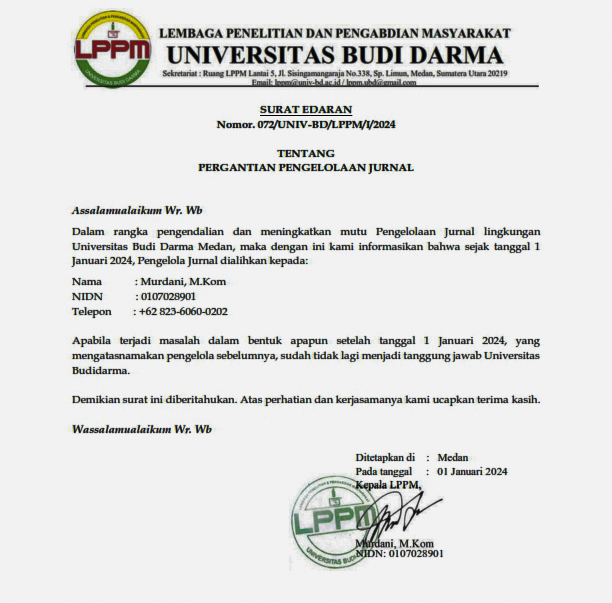Text Mining dan Klasifikasi Sentimen Berbasis Naïve Bayes Pada Opini Masyarakat terhadap Makanan Tradisional
DOI:
https://doi.org/10.30865/json.v4i2.5138Keywords:
Traditional Food, International Food, Sentiment, Twitter, Naïve BayesAbstract
Indonesia has several famous traditional foods and is available in some cities. In addition, several international foods also are interesting to Indonesian. This article analyzes the netizen sentiment for these food categories where the data source is Twitter. The foods are rendang, sate, gudeg, pizza, hamburger, and spaghetti. The text mining approach is adopted to process data. The research steps are data crawling, cleaning, filtering, translating, and splitting. Furthermore, the classifier model based on the Naïve Bayes algorithm is developed. The analysis result shows that the gudeg food reaches a high percentage of positive sentiment with 57,9.  Then, the high rate of negative sentiment is achieved by the rendang food with 21,9 %. Moreover, hamburger food obtains a high percentage of neutral sentiment. Meanwhile, the evaluation of classifier model performance shows that the model with the hamburger dataset achieves a high score for accuracy, precision, and recall parameters with 0.72, 0.72, and 0.68 sequentially.ÂReferences
P. Carracedo, R. Puertas, and L. Marti, “Research lines on the impact of the COVID-19 pandemic on business. A text mining analysis,†J. Bus. Res., vol. 132, no. September 2020, pp. 586–593, 2021, doi: 10.1016/j.jbusres.2020.11.043.
S. Mansour, “Social media analysis of user’s responses to terrorism using sentiment analysis and text mining,†Procedia Comput. Sci., vol. 140, pp. 95–103, 2018, doi: 10.1016/j.procs.2018.10.297.
Y. Sun et al., “Residents’ sentiments towards electricity price policy: Evidence from text mining in social media,†Resour. Conserv. Recycl., vol. 160, no. April, p. 104903, 2020, doi: 10.1016/j.resconrec.2020.104903.
M. Qorib, T. Oladunni, M. Denis, E. Ososanya, and P. Cotae, “Covid-19 Vaccine Hesitancy: Text Mining, Sentiment Analysis and Machine Learning on COVID-19 Vaccination Twitter Dataset,†Expert Syst. Appl., vol. 212, no. January 2022, p. 118715, 2022, doi: 10.1016/j.eswa.2022.118715.
J. Chen, N. Song, Y. Su, S. Zhao, and Y. Zhang, “Learning user sentiment orientation in social networks for sentiment analysis,†Inf. Sci. (Ny)., no. xxxx, 2022, doi: 10.1016/j.ins.2022.10.135.
W. Yulita et al., “Analisis Sentimen Terhadap Opini Masyarakat Tentang Vaksin Covid-19 Menggunakan Algoritma Naïve Bayes Classifier,†Jdmsi, vol. 2, no. 2, pp. 1–9, 2021.
R. Watrianthos, M. Giatman, W. Simatupang, R. Syafriyeti, and N. K. Daulay, “Analisis Sentimen Pembelajaran Campuran Menggunakan Twitter Data,†J. Media Inform. Budidarma, vol. 6, no. 1, p. 166, 2022, doi: 10.30865/mib.v6i1.3383.
M. A. Amrustian, W. Widayat, and A. M. Wirawan, “Analisis Sentimen Evaluasi Terhadap Pengajaran Dosen di Perguruan Tinggi Menggunakan Metode LSTM,†J. Media Inform. Budidarma, vol. 6, no. 1, p. 535, 2022, doi: 10.30865/mib.v6i1.3527.
B. Laurensz and Eko Sediyono, “Analisis Sentimen Masyarakat terhadap Tindakan Vaksinasi dalam Upaya Mengatasi Pandemi Covid-19,†J. Nas. Tek. Elektro dan Teknol. Inf., vol. 10, no. 2, pp. 118–123, 2021, doi: 10.22146/jnteti.v10i2.1421.
A. L. Fairuz, R. D. Ramadhani, and N. A. F. Tanjung, “Analisis Sentimen Masyarakat Terhadap COVID-19 Pada Media Sosial Twitter,†J. Dinda Data Sci. Inf. Technol. Data Anal., vol. 1, no. 1, pp. 42–51, 2021, doi: 10.20895/dinda.v1i1.180.
D. Darwis, N. Siskawati, and Z. Abidin, “Penerapan Algoritma Naive Bayes Untuk Analisis Sentimen Review Data Twitter Bmkg Nasional,†J. Tekno Kompak, vol. 15, no. 1, p. 131, 2021, doi: 10.33365/jtk.v15i1.744.
D. Duei Putri, G. F. Nama, and W. E. Sulistiono, “Analisis Sentimen Kinerja Dewan Perwakilan Rakyat (DPR) Pada Twitter Menggunakan Metode Naive Bayes Classifier,†J. Inform. dan Tek. Elektro Terap., vol. 10, no. 1, pp. 34–40, 2022, doi: 10.23960/jitet.v10i1.2262.
T. Rivanie, R. Pebrianto, T. Hidayat, A. Bayhaqy, W. Gata, and H. B. Novitasari, “Analisis Sentimen Terhadap Kinerja Menteri Kesehatan Indonesia Selama Pandemi Covid-19,†J. Inform., vol. 21, no. 1, pp. 1–13, 2021, doi: 10.30873/ji.v21i1.2864.
N. P. G. Naraswati, R. Nooraeni, D. C. Rosmilda, D. Desinta, F. Khairi, and R. Damaiyanti, “Analisis Sentimen Publik dari Twitter Tentang Kebijakan Penanganan Covid-19 di Indonesia dengan Naive Bayes Classification,†Sistemasi, vol. 10, no. 1, p. 222, 2021, doi: 10.32520/stmsi.v10i1.1179.
A. Rahman Isnain, A. Indra Sakti, D. Alita, and N. Satya Marga, “Sentimen Analisis Publik Terhadap Kebijakan Lockdown Pemerintah Jakarta Menggunakan Algoritma Svm,†Jdmsi, vol. 2, no. 1, pp. 31–37, 2021, [Online]. Available: https://t.co/NfhnfMjtXw
T. N. Wijaya, R. Indriati, and M. N. Muzaki, “Analisis Sentimen Opini Publik Tentang Undang-Undang Cipta Kerja Pada Twitter,†Jambura J. Electr. Electron. Eng., vol. 3, no. 2, pp. 78–83, 2021, doi: 10.37905/jjeee.v3i2.10885.
N. L. P. M. Putu, Ahmad Zuli Amrullah, and Ismarmiaty, “Analisis Sentimen dan Pemodelan Topik Pariwisata Lombok Menggunakan Algoritma Naive Bayes dan Latent Dirichlet Allocation,†J. RESTI (Rekayasa Sist. dan Teknol. Informasi), vol. 5, no. 1, pp. 123–131, 2021, doi: 10.29207/resti.v5i1.2587.
S. M. Salsabila, A. Alim Murtopo, and N. Fadhilah, “Analisis Sentimen Pelanggan Tokopedia Menggunakan Metode Naïve Bayes Classifier,†J. Minfo Polgan, vol. 11, no. 2, pp. 30–35, 2022, doi: 10.33395/jmp.v11i2.11640.
L. Li et al., “Naive Bayes classifier based on memristor nonlinear conductance,†Microelectronics J., vol. 129, no. September, 2022, doi: 10.1016/j.mejo.2022.105574.
H. Mustofa and A. A. Mahfudh, “Klasifikasi Berita Hoax Dengan Menggunakan Metode Naive Bayes,†Walisongo J. Inf. Technol., vol. 1, no. 1, p. 1, 2019, doi: 10.21580/wjit.2019.1.1.3915.
A. D. Wibisono, S. Dadi Rizkiono, and A. Wantoro, “Filtering Spam Email Menggunakan Metode Naive Bayes,†TELEFORTECH J. Telemat. Inf. Technol., vol. 1, no. 1, pp. 9–17, 2020, doi: 10.33365/tft.v1i1.685.
F. Xu, Z. Pan, and R. Xia, “E-commerce product review sentiment classification based on a naïve Bayes continuous learning framework,†Inf. Process. Manag., vol. 57, no. 5, p. 102221, 2020, doi: 10.1016/j.ipm.2020.102221.
S. Khairunnisa, A. Adiwijaya, and S. Al Faraby, “Pengaruh Text Preprocessing terhadap Analisis Sentimen Komentar Masyarakat pada Media Sosial Twitter (Studi Kasus Pandemi COVID-19),†J. Media Inform. Budidarma, vol. 5, no. 2, p. 406, 2021, doi: 10.30865/mib.v5i2.2835.
R. N. Fahmi, Nursyifa, and A. Primajaya, “Analisis Sentimen Pengguna Twitter Terhadap Kasus Penembakan Laskar Fpi Oleh Polri Dengan Metode Naive Bayes Classifier,†JIKO (Jurnal Inform. dan Komputer), vol. 5, no. 2, pp. 61–66, 2021, [Online]. Available: https://ejournal.akakom.ac.id/index.php/jiko/article/view/437
R. Asmara, “Analisis Sentimen Temporal tentang Kuliner di Kota Surabaya Berbasis Gender menggunakan Bahasa Indonesia,†vol. 5, no. 1, 2020.
R. N. Fahmi, T. Informatika, U. Singaperbangsa, and T. Timur, “Resti Noor Fahmi 1 , Nursyifa 2 , dan Aji Primajaya 3 Teknik Informatika Universitas Singaperbangsa Karawang Jl. HS.Ronggo Waluyo, Telukjambe Timur, Karawang,†vol. 5, no. 2, pp. 61–66, 2021.
N. B. Classifier and N. Bayes, “ANALISIS SENTIMEN HASHTAG KULINER DI INDONESIA,†vol. 2, no. 1, pp. 19–25, 2021.
I. A. Mastan and Y. Toni, “MENGGUNAKAN METODE NAÃVE BAYES CLASSIFIER SENTIMENT ANALYSIS OF CHICKEN CULINARY PLACE FROM VISITORS COMMENTS USING NAÃVE BAYES CLASSIFIER METHOD,†vol. 3, no. 1, pp. 42–50, 2020.
A. Dan and N. Bayes, “Analisis sentimen terhadap,†vol. 3, pp. 163–174, 2017.
I. T. Julianto, “Analisis Sentimen Terhadap Sistem Informasi Akademik Institut Teknologi Garut,†J. Algoritm., vol. 19, no. 1, pp. 449–456, 2022, doi: 10.33364/algoritma/v.19-1.1112.
K. Jindal and R. Aron, “A systematic study of sentiment analysis for social media data,†Mater. Today Proc., no. xxxx, 2021, doi: 10.1016/j.matpr.2021.01.048.
N. Azhar, P. P. Adikara, S. Adinugroho, and P. Korespondensi, “Analisis Sentimen Ulasan Kedai Kopi Menggunakan Metode Naïve Bayes Dengan Seleksi Fitur Algoritme Genetika Sentiment Analysis for Coffee Shop Reviews Using Naïve Bayes Method With Genetic Algorithm Feature Selection,†vol. 8, no. 3, pp. 609–618, 2021, doi: 10.25126/jtiik.202184436.
Downloads
Published
How to Cite
Issue
Section
License

This work is licensed under a Creative Commons Attribution 4.0 International License
Authors who publish with this journal agree to the following terms:
- Authors retain copyright and grant the journal right of first publication with the work simultaneously licensed under Creative Commons Attribution 4.0 International License that allows others to share the work with an acknowledgment of the work's authorship and initial publication in this journal.
- Authors are able to enter into separate, additional contractual arrangements for the non-exclusive distribution of the journal's published version of the work (e.g., post it to an institutional repository or publish it in a book), with an acknowledgment of its initial publication in this journal.
- Authors are permitted and encouraged to post their work online (e.g., in institutional repositories or on their website) prior to and during the submission process, as it can lead to productive exchanges, as well as earlier and greater citation of published work (Refer to The Effect of Open Access).





